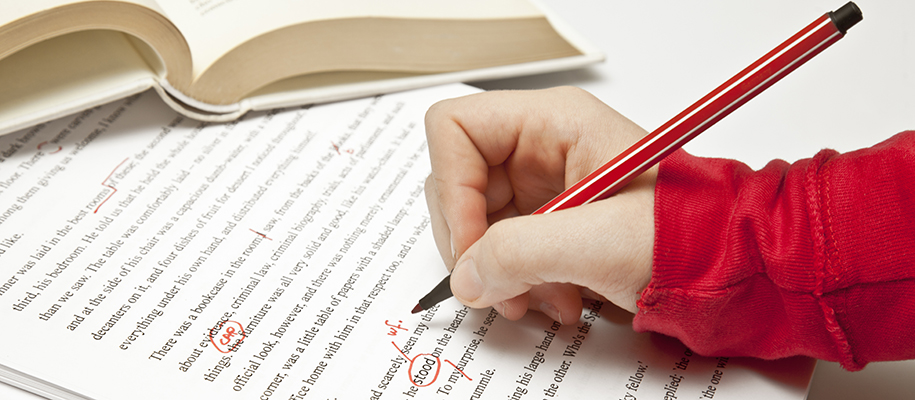Proofreading is a vital part of the essay writing process. It ensures your written work is error-free and accurately conveys your intended message. While many students may skip or be intimidated by this step, it’s not as tricky as it seems. With these five tips, you can learn how to proofread like a pro and ensure your essays are practically flawless.
1. Read it backward
The most common proofreading method is to read your essay out loud. However, this can be tedious and time-consuming. An alternative approach that can be highly effective is to read your essay backward. This technique requires you to start at the last sentence of your essay and work your way back through each line. Reading it this way helps you focus on the words rather than getting caught up in the flow of the content or structure of arguments. You’re more likely to spot grammatical errors this way as your eyes aren’t following a natural pattern.
Related: Writing Habits to Kick Before Going to College
2. Make a list of your mistakes
Making a list of any errors you uncover is crucial while editing your work. By doing this, you'll find it simpler to monitor the areas of writing you need to work on and ensure you're correcting any potential errors. This is also an excellent rewriting tool because it gives you a quick visual signal to refer to while working on a piece of writing. The first step in making a list of mistakes is identifying common errors, including:
- Typos
- Improper grammar
- Punctuation
- Syntax (sentence structure) and diction (word choice)
It’s helpful to organize by mistake types so it’s easier to find them when revisiting your essay. For example, have one section for typos you often make and another for grammatical errors.
After identifying the types of mistakes to look out for, it’s time to make your list! Start by thoroughly reading your essay and noting any areas that require improvement. If a section needs more than one edit, jot down specific notes so you can refer back to them later. For example, if there are multiple typos in one paragraph, write down "typo" on your list and the page number and line numbers where they appear. Once you’ve made your list of mistakes, it’ll be much easier to focus on improving these areas individually.
3. Use a digital automated proofreading tool
A great way to proofread your paper is with a paper checker—an automated program that scans your article and identifies any errors, typos, or inconsistencies in your writing. It’ll provide helpful feedback on grammar, spelling, structure, and formatting to ensure your paper is of the highest quality. Tools like these will perform a complete scan of your paper—looking for any potential spelling, grammar, and formatting irregularities—and offer tips on how to make your writing easier to read overall. In addition, using plagiarism detection tools can help you feel confident that your paper is completely original and hasn’t been plagiarized unintentionally. Always read over the input you receive with a paper checker and keep the advice provided in mind to enhance your work, but realize technology isn’t perfect and shouldn’t be relied on totally.
Related: 5 Helpful Ways to Improve Your Writing in College
4. Avoid negatives and passive voice
A good rule of thumb for a great essay is to stay away from negative and passive language and voice. Negative words such as “no,” “not,” and “never” could weaken the impact of your essay and make it difficult for readers to understand your meaning. Similarly, using passive language—such as “The war was won” instead of “They won the war”—could potentially confuse your readers. Spend some time changing any negative words or passive voice to more positive and active ones. This will help make your arguments more concise and clear.
5. Check your word usage
It’s essential to evaluate word choice as you proofread your essay. You must ensure you utilize words and expressions appropriately in the context of your topic or argument. Using the wrong term or phrase in a place where it doesn’t make sense is a common error many writers commit—for example, mixing up “they’re,” “there,” and “their.” These errors can reduce the impact of your essay and cause misunderstanding. That’s why it’s essential to take the time to consider how you use words carefully for the utmost clarity.
Related: 7 Tips to Boost Your Writing for Homework and Essays
Proofreading your essays may seem daunting, but it doesn’t have to be. With these tips, you can quickly become a pro at proofreading. Start by reading the article out loud, looking for structure and organizational mistakes. Then use a spellchecker to catch spelling errors. After that, look for grammar and punctuation mistakes. Finally, make sure your ideas are clear and concise by removing any unnecessary words or phrases. With practice, you can become an expert proofreader in no time!
Looking for academic advice beyond writing tips? Check out all Our Best Advice for Homework, Studying, and Tests.






